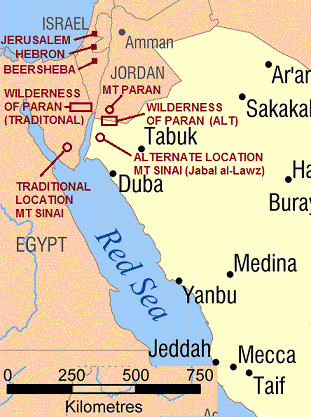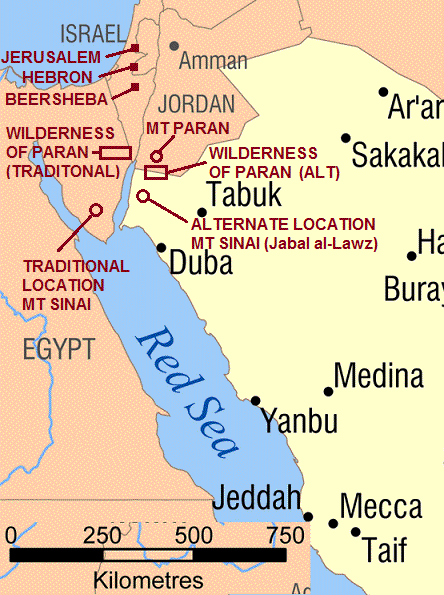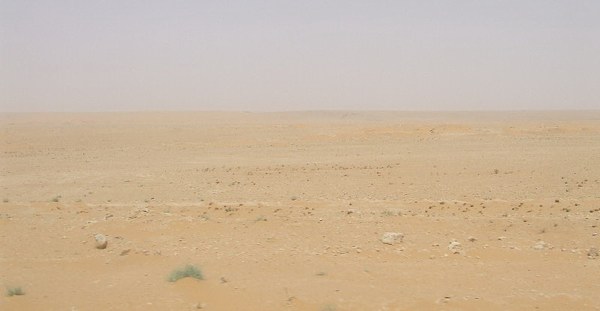THE HISTORY OF MECCA | home
THE HISTORY OF MECCA | GEOGRAPHY OF MECCA - ISLAM | ARCHAEOLOGY OF MECCA | BACA IS MECCA? | HISTORICAL CLAIMS REGARDING MECCA | ORIGINS OF ISLAM | RESOURCES | CONTACT
BACA IS MECCA?
To understand the Gospel from an Islamic perspective please visit IslamAndTheTruth.com
The popular entertainer Ahmed Deedat, as well as Zakir Naik and Yusuf Estes that parrot him, teach that an Old Testament reference to a place that went by the Hebrew name of "Baca", is somehow related to a 7th century Quraish Arabic word referenced one time in the Quran (3:96) as "Bakka" (Bakkah), even though it was penned some 1500 years after the Hebrew, in the relatively young language of Arabic (oldest evidence of Arabic dates to around 300 AD).
Even though there is no historical or archaeological evidence that suggests that Mecca ever existed prior to the 4th century AD some Muslims wish to believe that there is at least a scriptural reference to Mecca in the Old Testament, by suggesting a similarity between the ancient Hebrew name "Baca", and the 7th century Quraish Arabic name "Bakkah" in the Quran. Here are the verses quoted from The Jewish Study Bible that they parrot from famous entertainers like Ahmed Deedat:
"How lovely is Your dwelling-place, O Lord of Hosts. I long, I yearn for the courts of the Lord; my body and soul shout for joy to the living God ..... Happy are those who dwell in Your house; they forever praise You. Happy is the man who finds refuge in You, whose mind is on the [pilgrim] highways. They pass through the Valley of Baca, regarding it as a place of springs, as if the early rain had covered it with blessing ..... Better one day in Your courts than a thousand [anywhere else]; I would rather stand at the threshold of God's house than dwell in the tents of the wicked."
So what do the verses say that the Muslim apologists left out and replaced with the "....."? Let's investigate the passage and put in bold font what was omitted:
"How lovely is Your dwelling-place, O Lord of Hosts. I long, I yearn for the courts of the LORD; my body and soul shout for joy to the living God. Even the sparrow has found a home, and the swallow a nest for herself in which to set her young, near Your altar, O LORD of hosts, my king and my God. Happy are those who dwell in Your house; they forever praise You. Selah. Happy is the man who finds refuge in You, whose mind is on the [pilgrim] highways. They pass through the Valley of Baca, regarding it as a place of springs, as if the early rain had covered it with blessing. They go from rampart to rampart, appearing before God in Zion. O Lord, God of hosts, hear my prayer; give ear, O God of Jacob. O God, behold our shield, look upon the face of Your anointed. Better one day in Your courts than a thousand [anywhere else]; I would rather stand at the threshold of God’s house than dwell in the tents of the wicked."
So masters of deception like Ahmed Deedat, his self-described disciple "Dr." Zakir Naik and other dissimulators like Yusuf Estes - all of whom deceive their unsuspecting and trusting followers with this false notion - leave out the only verse that is germane to the location of the pilgrimage described, which is IN ZION! In Jerusalem, where YHWH had His people build His temple, the temple mount of which still stands today.
But all a person really has to do is apply a little common sense to the immovable, physical, geography of this ridiculous speculation. Are we really expected to believe that YHWH's people turned their backs on their temple that YHWH had them build in Jerusalem, to wander across 1400 kilometers of unexplored, untraveled, harsh, dry, waterless, barren desert wasteland, over a thousand years before the historical record informs us a route was established from north to south in Arabia? This in order to visit a town in the SW Arabian desert that was not settled until 2,000 years later in the 4th century AD? Then presumably YHWHs people marched around the Quraish's black stone idol and 5th-century Kaaba seven times, only to wander the 1400 kilometers back to their homes and temple in Jerusalem! Doesn't that makes about as much demographic and geographical sense, as believing that Abraham, Hagar or Ishmael made the same trip at an even earlier time in history?
The well that the scriptures inform us the Lord showed to Hagar, was obviously where the scriptures inform us she was wandering, which was in the "Wilderness of Beersheba" (which means "well of the seven"). Which of course makes perfect geographical sense since Beersheba was just south of Abraham's home in Hebron which is just south of Jerusalem.

(KJV) Psalms 84:6 [Who] passing through the valley of Baca make it a well; the rain also filleth the pools.
Since in the King James version there is a reference to a "well" some Muslims become even more excited believing it must be the well of Zamzam, which is located 1400 kilometers away from Beersheba, let alone that water wells were not unusual in the inhabited world. Additionally, Islamic history actually records that the well of Zamzam was dug by Mohammed's grandfather Abdel Mutaleb in the 6th century, who dedicated it to the most venerated priest and priestess of the Arabian jinn devil religion, Asaf and Naelah.
Blessedly we can set all of the idle speculation and vain wishes about Baca and Bakkah aside, by simply reading the next verse in the King James and every other version, that pins the actual location:
84:7 They go from strength to strength, [every one of them] in Zion appeareth before God.
Zion is mentioned 152 times in the Bible because it is the name of the easternmost hill of the city of Jerusalem. Thus we see this passage describing a journey to ZION - to Jerusalem - to the Holy Land. Baca simply being a stop along the way. It's obviously absurd to suggest that this pilgrimage of God's Old Testament saints, rather than traveling to the temple that God had them build IN ZION, instead wandered 1400 kilometers across harsh barren, unexplored Arabian desert, as detailed earlier.
Indeed YHWH's people continue to go on pilgrimages to the Holy Land unto this day.
The Valley of Baca (URL)
In regard to the valley of Baca referenced in Scripture, which means balsam trees and weeping, search - battle jerusalem balsam trees - then try - mulberry balsam trees -
“The Valley of Rephaim lay southwest of Jerusalem and formed part of the boundary between Judah and Benjamin (Joshua 15:8). It may correspond to the ‘Valley of Baca’ (Psalm 84:6), due to the balsam trees that were there (1 Chronicles 14:14-15). These are named, literally, ‘weepers’ because of their drops of milky sap.” (Payne)
All Islamic vain speculation regarding Mecca and Mohammed in the Bible, is exposed as wasted energy, wishful thinking or taqiyyah, once one learns that there is absolutely no historical or archaeological evidence that suggests that Mecca ever existed before the 4th century AD, or it's Kaaba before the early 5th century when Asa’d Abu Karb built it for Arabian Star Family worship, the black stone idol of which is still housed in the kaaba to this day.
Compounding the dearth of historical and archaeological evidence is the demographic and geographical impossibility of Abraham, Hagar or Ishmael ever having been within 1,000 kilometers of where Mecca was eventually settled in the 4th century AD.

The historical record in Scripture of the area he traveled inform us that Abraham's journey was largely in the opposite direction of Mecca, in the "Fertile Crescent" where necessities for sustenance of human life were present, like food and water.

Obviously not across 1400 kilometers of terrain like this (Syrian desert example in northern Arabia):

As is so often is the case, when so many Bible-ignorant folks parrot the same falsehood in unison, you will generally find Ahmed Deedat, Zakir Naik and Yusuf Estes' fingerprints on it.